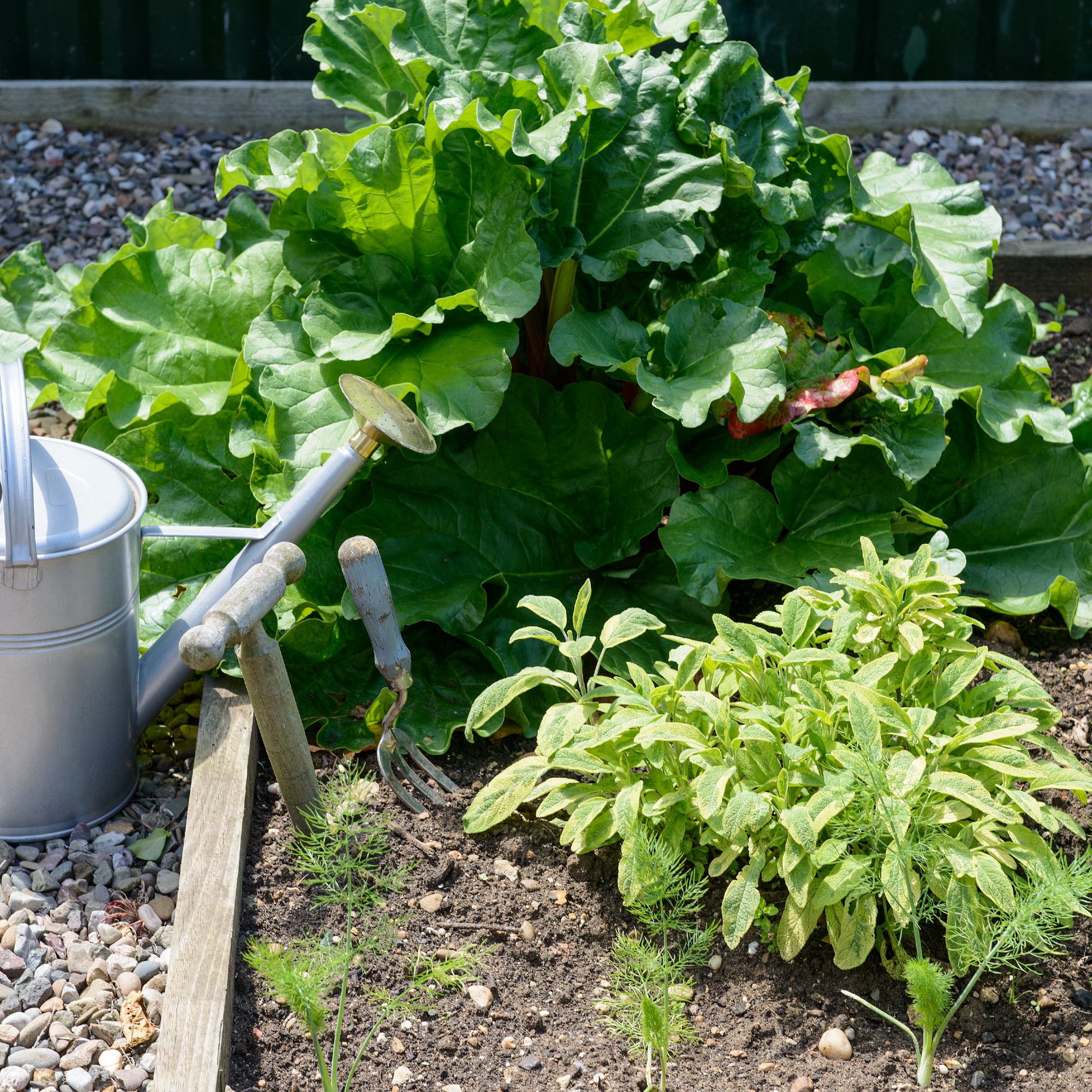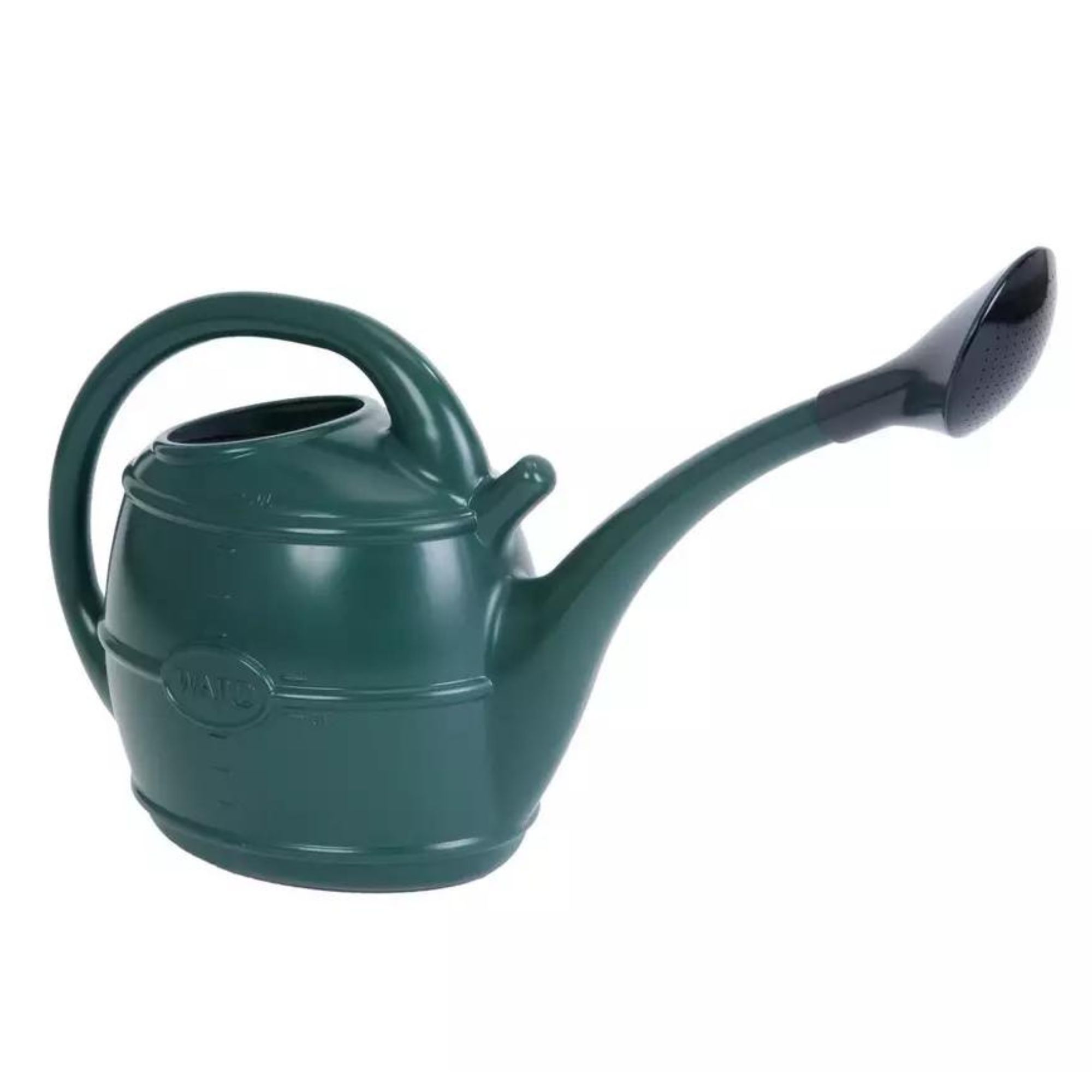Is it better to water plants in the morning or at night? Experts are leaning towards one for a few crucial reasons...
This is the best option for keeping your plants happy and hydrated

Sophie King

Water is a precious resource, especially at this time of year, and that's got us wondering: Is it better to water plants in the morning or at night?
We know one thing for certain: watering your plants during the middle of the day is one of the worst garden watering mistakes you can make. To avoid scorching your plants and wasting water, you'll need to wait until the sun isn't high in the sky.
That gives us two options: the beginning of the day, or the end of the day. But is it better to water plants in the morning or at night? We spoke to the experts to find out.

If you want your garden to thrive, you'll need to know how often you should water your garden in hot weather – but when you water it is just as important.
When it comes to the debate around whether it's better to water plants in the morning or at night, experts tend to learn towards one more than the other: the morning.
'Ideally, it’s better to water in the early morning when temperatures are cooler,' says Hayden Salt, garden centre manager at Jacksons Nurseries. 'This allows time for the water to soak deep into the roots and prevents the growth of mildew, which can happen if plants are sat in very wet soil overnight.'

So, the morning is the preferred time to water your plants, as long as you get out there early enough.
Sign up to our newsletter for style inspiration, real homes, project and garden advice and shopping know-how
‘I would recommend watering your plants in the morning, rather than at night, especially in the summer,' agrees John Clifford, garden expert at Gardenstone. ‘That way, you're allowing the water to properly soak into the soil before the heat arrives and causes it to evaporate.'
Of course, keeping your garden cool during a heatwave is paramount, and part and parcel of that is keeping your plants hydrated. Watering in the morning means your plants are hydrated before temperatures rise later in the day.
'This is important because it helps plants cope with the stress of the hot sun,' explains John. 'Without it, plants will wilt in the heat.'

But that’s not the only reason why it’s better to water your plants in the morning. By doing this, you'll also avoid overwatering your plants in the summer – which is surprisingly easy to do – and prevent all of the problems that come with overwatering.
Watering your plants in the morning also ensures less water wastage, which is especially important if you're watering your garden during a hosepipe ban.

As Hayden mentioned earlier, watering your plants in the morning instead of at night will also reduce the risk of fungal diseases developing in soggy soil overnight.
That's not the only problem you'll dodge by avoiding an evening watering session, though – it's also helpful if you want to get rid of slugs, as these slimy invaders thrive at nighttime and are drawn towards damp plants and crops. So, by watering in the morning rather than at night, you can keep garden plant pests like these at bay.
This is echoed by Morris Hankinson, director of Hopes Grove Nurseries, who says, 'Slugs and snails tend to like moisture and are also more likely to be munching on your plants at night time, so avoiding watering in the evening may help your plants avoid any slug and snail damage.'

Morris Hankinson is the founder and managing director of Hopes Grove Nurseries Ltd, the UK’s only specialist grower-retailer of hedging plants. He established the thriving business in 1992, shortly after graduating with a Commercial Horticulture Degree from Writtle College, Essex.
That doesn’t mean that you can’t water your plants at night at all, though. If you notice that your plants look particularly dry or limp, giving them a little top-up wouldn’t go amiss. This will give them a little boost overnight and allow them to replenish their water stores before you water in the morning.
Just make sure that you keep this nighttime watering session to a minimum and only give them a little drink rather than a giant gulp. Timing is key, too.
'If you can’t water very early in the morning, then it’s a much better idea to water plants in the early evening, around 7pm,' advises Hayden. 'This will allow water to soak deep into the roots, providing adequate hydration.'
You'll also have to be careful about where you're watering.
'Try to water into the soil around the base of the plants rather than over the top,' suggests Morris. 'This helps more water reach the roots of the plants where it’s needed and can prevent some pests and diseases from spreading.'

If you don’t want to go out into the garden with a watering can every morning (or you’re not a morning person at all), there are ways to water your garden in the morning without the extra hassle. You could set up a drip watering system or even utilise smart watering to set timers and water your garden while you’re still sleeping, for example.
What you'll need
FAQs
Do plants absorb water better at night or during the day?
Hayden said: “If you water your plants during the day during hot summer spells then you risk the sun immediately evaporating the water, rather than it soaking deep into the soil.
Evaporation is a key player when it comes to watering your plants during the day, which is why experts usually suggest watering at night, or in the morning, instead.
'If you water your plants during the day during hot summer spells, then you risk the sun immediately evaporating the water, rather than it soaking deep into the soil,' says Hayden from Jacksons Nurseries.
'Watering plants during the middle of the day, when the sun is at its strongest, also risks foliage from becoming scorched.'
Just make sure you don't water your plants too late in the evening, when the risk of mildew is higher.
Should you water plants every night in summer?
Ultimately, this all depends on the individual plant and where it’s located. Plants in the shade may not need watering every night in the summer as there’s less chance of the water evaporating. However, plants in direct sunlight may indeed need watering every now.
Because of this, it’s best to inspect the plants in your garden every evening and decide there and then whether they need watering. You can do this by visibly looking at them and also checking the soil around them.
So, there you have it. Now you know whether it’s better to water plants in the morning or at night. Mornings are the preferred choice, but early evening can work, too.

Lauren Bradbury has been the Content Editor for the House Manual section since January 2025 but worked with the team as a freelancer for a year and a half before that. She graduated with a Bachelor’s degree in English and Creative Writing from the University of Chichester in 2016. Then, she dipped her toe into the world of content writing, primarily focusing on home content. After years of agency work, she decided to take the plunge and become a full-time freelancer for online publications, including Real Homes and Ideal Home, before taking on this permanent role. Now, she spends her days searching for the best decluttering and cleaning hacks and creating handy how-to guides for homeowners and renters alike, as well as testing vacuums as part of her role as the Ideal Home Certified Expert in Training on Vacuums, having spent over 110 hours testing different vacuum models to date!
- Sophie KingGardens Editor


